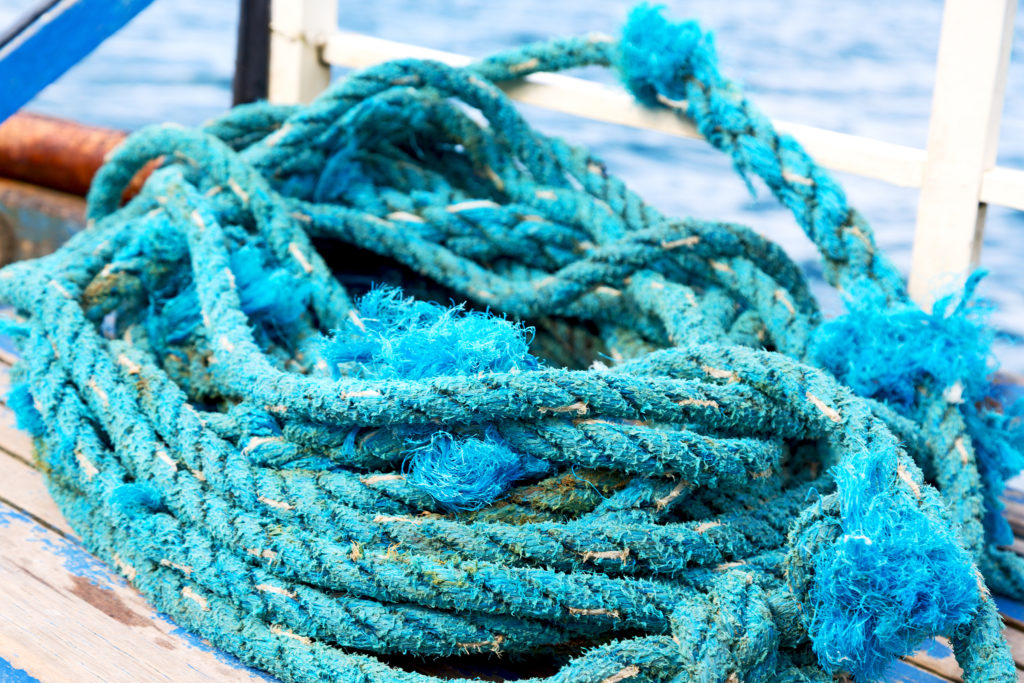Sporting Life: Knot Again

By Dennis Doyle
Luckily, it’s too windy, too wet, or too cold this spring to be outside for long because some tackle chores still need your attention. These tasks will take some time to accomplish, especially if you’ve left your rockfish tackle rigged.
You really should strip and cut off the first 20 feet of line on every reel you intend to use, retie all of the knots and replace all leaders. Don’t put this off, or you’ll regret it May 1.
That first 20 feet of line experienced most of the wear and fatigue of last season, and the stress and abrasion placed on your leaders has made them far more visible (and possibly weaker) than they were when they were fresh, clear and new. It’s an opportune time to replace them, especially since the first fish of the year are the biggest, most experienced, prone to be selective and will test your gear to its very limits.
And be sure to check the main body of the line itself, is it still sound? Monofilament is usually good for at least two years of regular usage. If it was left on the boat or outside in direct sunlight, it’s a good idea to replace it every season. Keep in mind that the first sign of serious degradation is knot failure. If you’ve any doubts about its integrity, put a single overhand knot in it and give it a good honest pull. You may be surprised and not in a good way.
Braided line has a longer life span than mono but it’s not endless. If it has lost its color and is now dull gray or whitish, it’s signaling for replacement. Again, the knots will begin failing first so beware. Your line is the least expensive element in each rig, don’t try to save money here, you’ll regret this failure the most.
Have your line replaced at a tackle shop that has good merchandise turnover and a line-winding machine. All lines, especially monofilament, have a definite shelf life, especially under strong fluorescent lighting. Be aware of this. Again, if in doubt, tie an overhand knot in it and give it a good pull—if it fails choose another or better yet, go to a better store. Lines above 20-pound test are hard to test; if it has become opaque or has a frosty appearance or has become stiff, change it out.
If you’re going to spool your line off of your bulk supply be careful that you don’t put twist in it while winding it on, conventional reels need to pull line off of a turning spool directly onto itself. Spinning reels need to feed the line off of the end of the supply spool and in the same turning direction that the reel is winding it on. Line twist accumulation will lead to tangles, knots and line failure. If you’ve got twist accumulated in your line, trail the afflicted section, weightless, behind the boat or into a passing current until it turns itself straight. It’s the only way, aside from replacement.
Know your knots. The internet has an ample supply of fishing knot videos on how to tie them. Unfortunately, it has too many—it is almost impossible to know which to use and when. The first thing to know is that you don’t need them all and to tie a knot competently you need to do it often.
The Fisherman’s Knot, also known as the improved clinch knot, is the first to master. This is the most popular knot in use today. Do not confuse it with the clinch knot—which will fail. The improved clinch is designed for monofilament and is commonly used to tie on hooks, swivels, snaps, lures and the like. It is about a 90 percent strength knot. It can be used with braided line if you double up the line and increase the number of wraps required by half.
The next knot is the Blood Knot or Barrel Knot (same knot, two names). This knot is for joining two lengths of line together. It has close to 100 percent knot strength. Remember this knot, eventually you will need it. The surgeons loop is another simple knot and the handiest for creating a loop.
Learn to tie these three with at least 30-pound test line for visibility, simplicity and a reasonable dexterity requirement. Remember to always moisten (hence lubricate) each knot with saliva when tightening it, and always tighten them firmly. If, when completed, it doesn’t look like the picture provided on the computer or your phone or in your memory, cut it off and tie it again. If you experience line failure examine the very end, if it looks like a little pig’s tail (curlicue) your knot failed, not the line.
*Apologies to Bill Grap for stealing his boat’s name for the column title.
